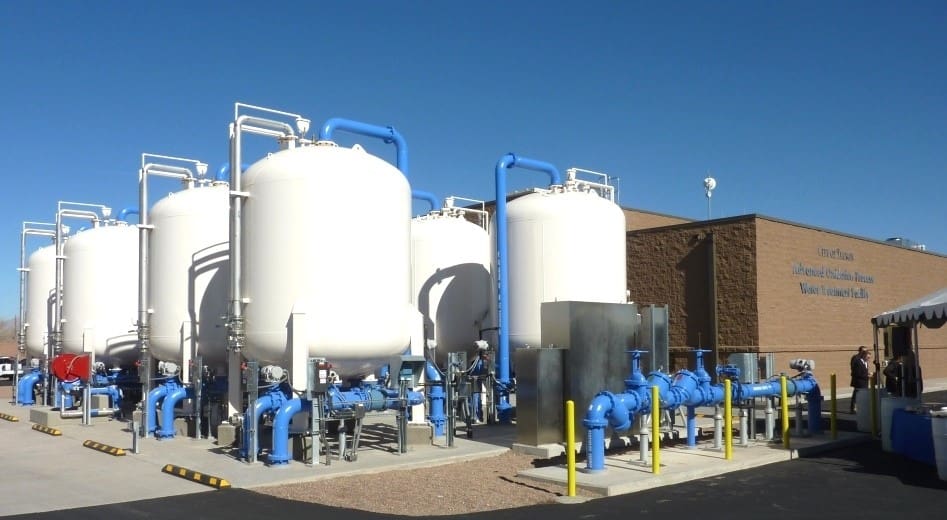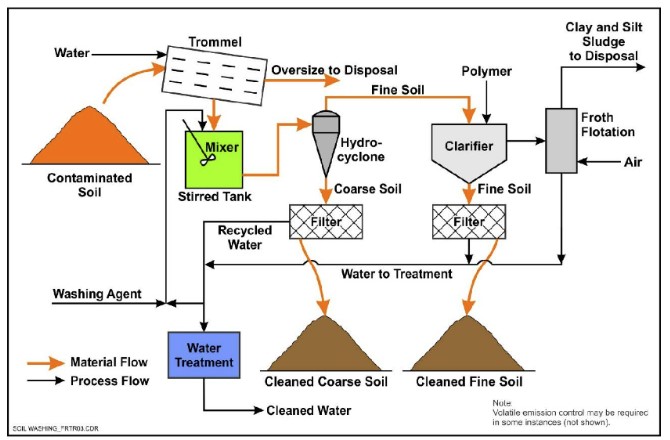Your Overview to PFAS Treatment Technologies and Advantages
The prevalence of PFAS contamination in water resources requires a complete understanding of offered therapy modern technologies. Different approaches, such as activated carbon filtration, ion exchange systems, and progressed oxidation processes, existing distinct advantages in dealing with these relentless contaminants. Each modern technology not only targets specific PFAS substances yet likewise plays an important duty in enhancing total water quality and securing ecological integrity. As communities come to grips with the implications of PFAS exposure, the choice of a proper therapy technique ends up being increasingly essential, prompting a more detailed evaluation of these modern technologies and their respective benefits.
Recognizing PFAS Contamination
Recognizing PFAS contamination is crucial for resolving its pervasive effect on environmental and human health and wellness (m270 pfas treatment). Per- and polyfluoroalkyl materials (PFAS) are a team of artificial chemicals widely utilized in different industrial and consumer products due to their water- and grease-resistant residential or commercial properties. Typically discovered in firefighting foams, non-stick kitchenware, and water-repellent textiles, PFAS have actually gone into the environment via manufacturing procedures, wastewater discharges, and seeping from land fills
When released, these compounds continue the environment, resulting in extensive contamination of soil and water resources. Their one-of-a-kind chemical framework, characterized by solid carbon-fluorine bonds, makes them immune to destruction, causing a sensation known as "permanently chemicals." As a result, PFAS can build up in the human body and the food web, potentially causing damaging health impacts, including immune system disturbance, developmental concerns, and an increased threat of particular cancers.
Regulatory firms and health companies are progressively recognizing the significance of PFAS contamination, motivating efforts to check, evaluate, and minimize its impacts. Recognizing the paths of PFAS contamination is necessary for notifying public law and establishing reliable techniques to shield both ecological and human health and wellness.
Introduction of Therapy Technologies
Various treatment modern technologies have actually been established to resolve the difficulties postured by PFAS contamination in water and soil. These innovations can be generally identified right into several classifications, each with its special mechanisms and effectiveness in eliminating PFAS substances.
One popular approach is ion exchange, which makes use of material materials to capture and remove PFAS from polluted water. One more modern technology, advanced oxidation procedures (AOPs), uses solid oxidants and ultraviolet light to damage down PFAS into much less harmful compounds.

Turned On Carbon Filtering
Turned on carbon purification is a commonly utilized technique for the elimination of PFAS from polluted water, known for its capability to adsorb a wide variety of natural substances. This innovation uses triggered carbon, a very permeable product with a comprehensive surface, which helps with the binding of PFAS particles with physical adsorption. The performance of triggered carbon in removing PFAS is affected by numerous variables, including the kind of carbon utilized, the get in touch with time, and the concentration of PFAS in the water.
Among the advantages of triggered Clicking Here carbon purification is its flexibility; it can be applied in numerous setups, such as granular activated carbon (GAC) systems or powdered turned on carbon (POLITICAL ACTION COMMITTEE) systems. GAC systems are commonly employed in larger-scale applications, while political action committee can be utilized in smaller or momentary configurations. The modern technology is relatively simple to operate and preserve, making it obtainable for many water treatment facilities.

Ion Exchange Solution
Ion exchange systems represent another reliable technique for the elimination of PFAS from infected water, enhancing techniques like triggered carbon filtering. These systems operate the principle of trading ions in the water with ions hung on a resin product. Ion exchange materials can be especially created to target the adversely billed PFAS substances, successfully recording them and enabling cleaner water to travel through.
One of the key advantages of ion exchange systems is their capability to eliminate a large range of PFAS, consisting of both long-chain and short-chain variants. This flexibility makes them appropriate for different applications, ranging from metropolitan water treatment to commercial processes. Furthermore, ion exchange systems can frequently accomplish reduced detection limits for PFAS compared to a few other therapy approaches, therefore improving water quality.
Nevertheless, it is important to keep an eye on and manage the regrowth of ion exchange media, as the efficiency link can decline in time because of saturation. Appropriate upkeep and substitute of the resin are important for sustaining the system's efficiency. On the whole, ion exchange systems offer a trustworthy and efficient remedy for PFAS removal, contributing dramatically to safe alcohol consumption water requirements and environmental management.
Advanced Oxidation Processes
Advanced Oxidation Processes (AOPs) utilize effective oxidants to successfully deteriorate PFAS compounds in contaminated water. These cutting-edge therapy techniques create highly responsive species, such as hydroxyl radicals, that can damage down intricate PFAS particles into less harmful results. m270 pfas treatment. AOPs usually employ mixes of ultraviolet (UV) light, ozone, hydrogen peroxide, or Fenton's reagent, boosting the oxidation capacity and boosting degradation effectiveness
The main advantage of go to this web-site AOPs hinges on their capacity to target a broad variety of PFAS substances, including both long-chain and short-chain variants. This flexibility is crucial, as PFAS contamination commonly includes combinations of different substances with varying chemical structures. Moreover, AOPs can be incorporated into existing water therapy systems, making them a sensible remedy for numerous towns and sectors.
However, the implementation of AOPs can be resource-intensive, requiring mindful consideration of functional costs and energy intake. In addition, while AOPs work in damaging down PFAS, they might not totally remove all by-products, demanding further therapy steps - m270 pfas treatment. In general, AOPs represent an appealing opportunity for dealing with PFAS contamination, adding to cleaner water resources and enhanced public health security

Conclusion
By picking the proper technology, communities can enhance water quality, safeguard public health and wellness, and alleviate the environmental dangers connected with PFAS direct exposure. Proceeded study and application of these techniques are necessary for reliable management of PFAS contamination in impacted locations.